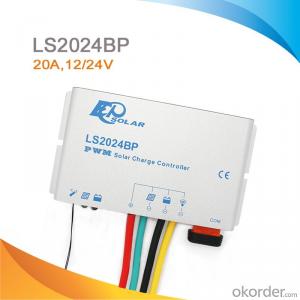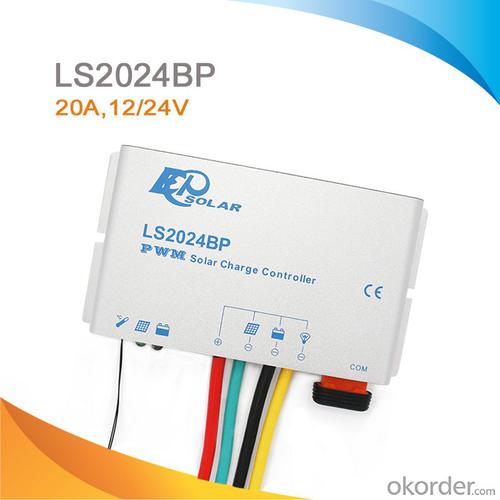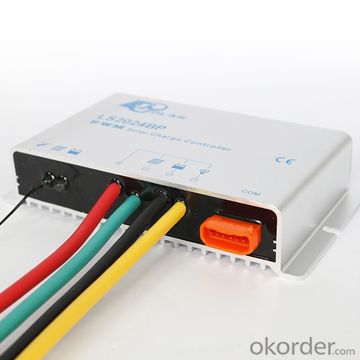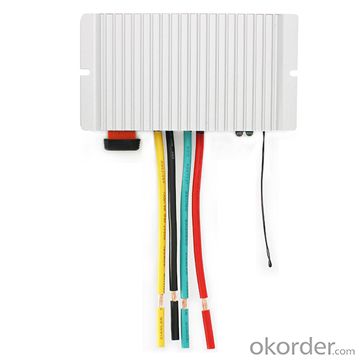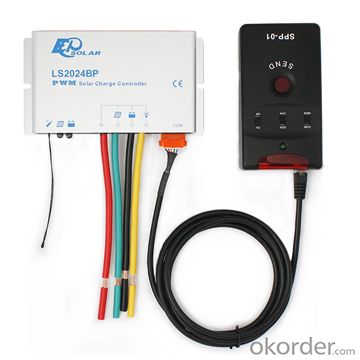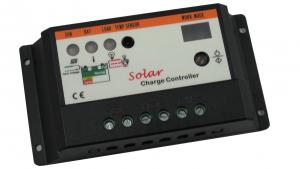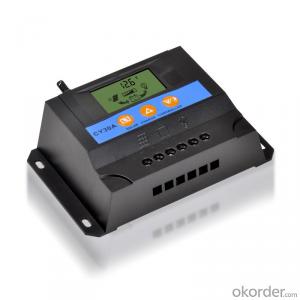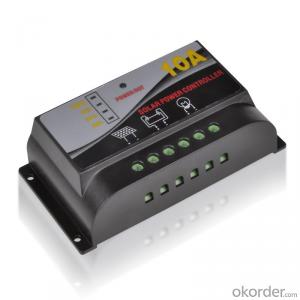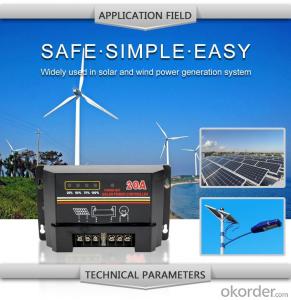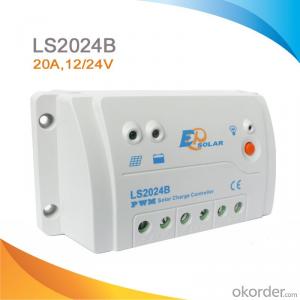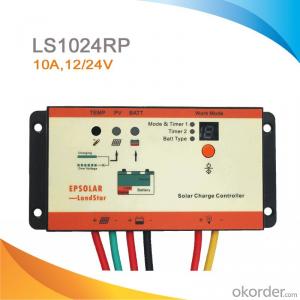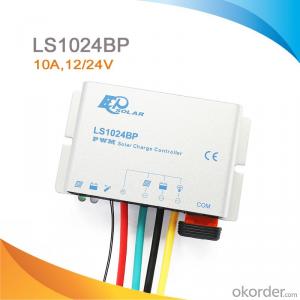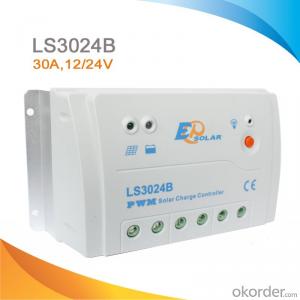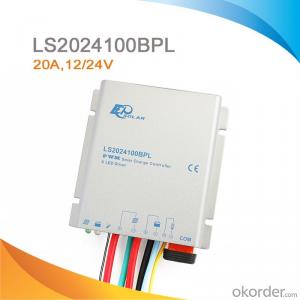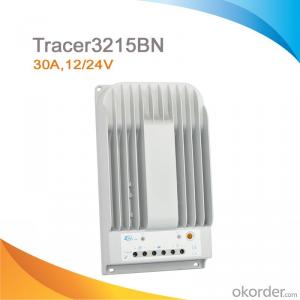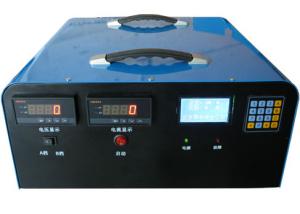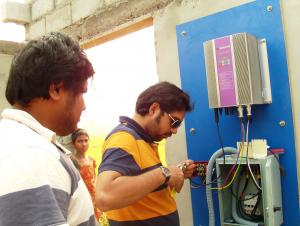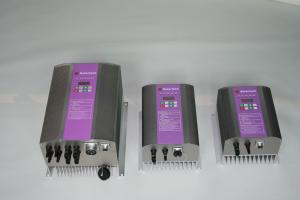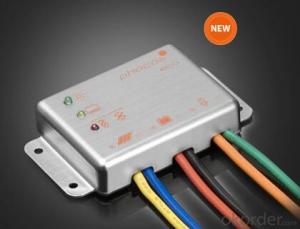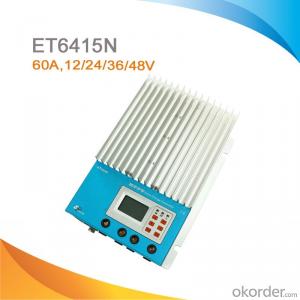Solar Controllers Rv Waterproof PWM Solar Charge Controller 20A, 12/24V, LS2024BP
- Loading Port:
- China main port
- Payment Terms:
- TT or LC
- Min Order Qty:
- -
- Supply Capability:
- -
OKorder Service Pledge
OKorder Financial Service
You Might Also Like
Features:
·12V/24V automatic identify or user-defined working voltage.
·High efficient Series PWM charging, increase the battery lifetime and improve the solar system performance.
·Use MOSFET as electronic switch, without any mechanical switch.
·Multiple load control modes, increase the flexibility of the load output
·Gel, Sealed, Flooded and user-defined battery type option.
·New SOC method of calculating accurately displays the available battery capacity.
·LandStar BP has no keys , The control function and the switch condition of the load can be modified by communication connection.
·Use of standard Modbus communication protocol for TTL-232 bus connections, communication protocol compatibility much better
·Support firmware upgrade
·Fully encapsulated PCB, IP67 protection
·Aluminumhousing
More powerful function via MT50 or PC
·Diversified load control modes : Manual, Light ON/OFF, Light ON+ Timer, Time Control
·Battery type selection: Gel, sealed, flooded and User type
·Real-time monitor
·Programmable parameters
·LVD or SOC load disconnect function
·Energy statistics function
Electronic Protections:
·PV array short circuit
·Over discharging
·Over charging
·Load overload
·Load short circuit
·PV reverse polarity
·Battery reverse polarity
·Overheating
Specification:
Electrical parameters | LS1024BP | LS2024BP |
Nominal System Voltage | 12 / 24V auto work | |
Rated Battery Current | 10A | 20A |
Maximum battery voltage | 34V | |
Grounding | Common positive | |
Self-consumption | 8.4mA(12V),7.8mA(24V) | |
Temp. compensation | -3mV/℃/2V(25℃ ref) | |
Equalize charging voltage | Sealed: 14.6V, Flooded: 14.8V, User-defined: 9~17V | |
Boost charging voltage | Gel: 14.2V, Sealed: 14.4V, Flooded: 14.6V, User-defined: 9~17V | |
Float charging voltage | Gel /Sealed /Flooded: 13.8V, User-defined: 9~17V | |
Low voltage reconnect voltage | Gel /Sealed /Flooded: 12.6V, User-defined: 9~17V | |
Low voltage disconnect voltage | Gel /Sealed /Flooded: 11.1V, User-defined: 9~17V | |
Working temp. | -35℃~+55℃ | |
Humidity | ≤95% (NC) | |
Enclosure | IP67 | |
Dimension | 108.5 x 64.5 x 25.6mm | 139 x 76.5 x 28mm |
Terminal | 4mm2 | 6mm2 |
Net weight | 0.4kg | 0.6kg |
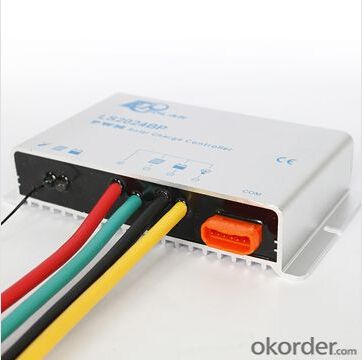
FAQ:
Q1. What is the voltage?
A1. Our 45/60A solar charge controller is 12/24/36/48V auto work.
Q2. What is the difference between MPPT&PWM?
A2. MPPT has higher efficiency, it can track the max power point and won't waste energy.
Q3. What is the efficiency of the MPPT controller?
A3. MPPT>99%, peak conversion efficiency>98%.
Q4. What is the waranty of product?
A4. 12 months.
Q5. What protection does your MPPT controller have?
A5. PV array short circuit, PV reverse polarity, Battery reverse polarity, Over charging, Output short circuit.
- Q: How does a solar controller prevent damage to the solar panels from overvoltage conditions?
- A solar controller prevents damage to solar panels from overvoltage conditions by regulating the flow of electricity from the panels to the battery or grid. It acts as a bridge between the solar panels and the battery or grid, ensuring that the voltage output from the panels is within safe limits. When the solar panels generate electricity, they produce a certain voltage depending on the intensity of sunlight. However, this voltage may fluctuate due to various factors such as weather conditions and panel temperature. If the voltage exceeds the safe operating range, it can damage the panels. The solar controller constantly monitors the voltage output from the panels. If it detects that the voltage is too high, it activates a mechanism to prevent the excess voltage from reaching the panels. This mechanism can include various techniques such as pulse width modulation (PWM) or maximum power point tracking (MPPT), depending on the type of solar controller. PWM controllers regulate the voltage by rapidly switching the connection between the panels and the battery on and off. This effectively reduces the average voltage reaching the panels, preventing overvoltage conditions. MPPT controllers, on the other hand, optimize the energy conversion by adjusting the electrical load to extract maximum power from the panels without exceeding the safe voltage threshold. In both cases, the solar controller ensures that the voltage output from the panels remains within the specified range, safeguarding them from potential damage. Additionally, some advanced solar controllers may also incorporate features like temperature compensation to account for temperature variations, further enhancing the protection of the solar panels. In summary, a solar controller prevents damage to solar panels from overvoltage conditions by regulating and controlling the voltage output from the panels, ensuring it stays within safe limits through techniques like PWM or MPPT. This protection mechanism helps prolong the lifespan and efficiency of the solar panels, maximizing their performance and investment.
- Q: Can a solar controller be used with solar-powered marine systems?
- Yes, a solar controller can be used with solar-powered marine systems. A solar controller helps regulate and optimize the charging process of batteries connected to solar panels. This is essential in marine systems as it helps protect the batteries from overcharging and provides efficient power management.
- Q: Can a solar controller be used in a solar-powered research station in Antarctica?
- Yes, a solar controller can be used in a solar-powered research station in Antarctica. A solar controller is essential for regulating and optimizing the charging and discharging of batteries connected to the solar panels in the extreme weather conditions of Antarctica. It helps to protect the batteries from overcharging, over-discharging, and other potential damages, ensuring efficient and reliable power generation for the research station.
- Q: Can a solar controller be used in a solar-powered submarine?
- Yes, a solar controller can be used in a solar-powered submarine. A solar controller manages the flow of electricity from the solar panels to the batteries, ensuring that the batteries are charged efficiently and preventing overcharging. In a solar-powered submarine, the solar controller would be essential for regulating the power generated by the solar panels and storing it in the batteries to power the submarine's systems and propulsion.
- Q: Can a solar controller be used with a solar-powered hydroponic system?
- Yes, a solar controller can be used with a solar-powered hydroponic system. A solar controller is designed to regulate and optimize the charging and discharging of batteries in a solar system. In a solar-powered hydroponic system, the solar controller can be used to ensure the efficient use of solar energy by controlling the flow of power to the system's components, such as the pumps, lights, and sensors. This helps in maintaining the optimal conditions for plant growth while maximizing the utilization of solar power.
- Q: What are the indicators and display features typically found on a solar controller?
- The indicators and display features typically found on a solar controller include battery voltage, charging current, load current, charging status, battery capacity, error codes, and various control buttons for mode selection and parameter adjustments.
- Q: Can a solar controller be used with a solar air conditioning system?
- Yes, a solar controller can be used with a solar air conditioning system. A solar controller is designed to regulate and optimize the power output of solar panels, ensuring efficient operation of the system. Since a solar air conditioning system relies on solar energy to power its operations, a solar controller can effectively manage and distribute the power generated by the solar panels to the air conditioning unit.
- Q: Can a solar controller be used with a solar-powered nuclear reactor?
- No, a solar controller cannot be used with a solar-powered nuclear reactor. A solar controller is specifically designed to regulate the charging and discharging of batteries connected to a solar panel system. On the other hand, a nuclear reactor generates power through a different process involving nuclear fission. Therefore, the two technologies are incompatible and cannot be used together.
- Q: Can a solar controller be used in extreme weather conditions (high winds, heavy rain, etc.)?
- Yes, solar controllers are designed to withstand extreme weather conditions such as high winds and heavy rain. They are typically built with sturdy and waterproof materials to ensure durability and protection from outdoor elements. However, it is always recommended to check the specific specifications and guidelines provided by the manufacturer to ensure proper functioning and longevity of the solar controller in such conditions.
- Q: Can a solar controller be used with a solar heating system?
- Yes, a solar controller can be used with a solar heating system. A solar controller is designed to regulate and control the flow of energy between the solar panels and the heating system, ensuring optimal performance and efficiency. It helps monitor and adjust the temperature, flow rate, and other parameters to ensure effective utilization of solar energy for heating purposes.
Send your message to us
Solar Controllers Rv Waterproof PWM Solar Charge Controller 20A, 12/24V, LS2024BP
- Loading Port:
- China main port
- Payment Terms:
- TT or LC
- Min Order Qty:
- -
- Supply Capability:
- -
OKorder Service Pledge
OKorder Financial Service
Similar products
Hot products
Hot Searches
Related keywords
